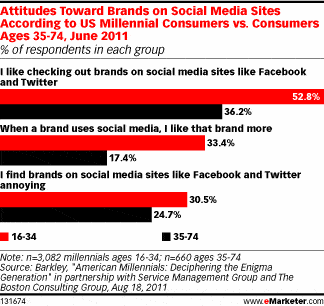
Everyday the Internet gets more complicated. In particular, Google gets more complicated. The good news is that if you are obsessed with conversion rate and usability, like I am, Google has been moving into your strengths over the last few years.
Google is making search optimization and conversion optimization more similar.
I will save you the boring stuff and summarize which changes bode well for the Conversion Rate Optimizer (CRO) to score big in Search Engine Optimization (SEO).
- Vince Update – Branded search increases effect on general searches
- Panda Update – Thin content devalued and aggressive ad placement suppressed
- Plus Your World – Social context for search results
- Penguin Update – Unnatural link profiles devalued
- Speed as a Factor for SEO and for CRO – Fast wins the day
The major arc of Google’s recent evolution has been engagement. Brand engages competitive type people; content engages researching people; social proof engages humanistic (social) people; and speed engages spontaneous people. If you have read Call to Action, or any of the Eisenberg books, those descriptions will be familiar.
In your next review and renovation of your site I want you to follow this mantra: Simplify, Speed Up, and Share.
This will help you improve your standing with both Google and the people that visit your site.
Part 1 – Simplify

Tasks that can help SEO and CRO be more simple:
Reduce your links
Reducing the number of links per page improves SEO by passing more value to the linked pages, and helps conversion rate by reducing distractions and keeping logical choices clustered. Double win.
Refine your purpose
Refine your purpose taking away most of the peripheral content and adding calls to action for either traveling deeper into the subject, or a well titled landing page for a lead that trades topical information (or product) for the customer action. In some ways this is returning to the concept of theme siloing. Siloing has been a very popular tactic for years, but bringing conversion concepts like leading content and timely calls to action can actually leverage this SEO tactic for conversion gains.
Explain more
Explain more. Giving more specifics and details along with reviews and testimonials will help your page be more human. The variety of language around your action and page topic will give you positive factors with Google and entice visitors to spend more time, dig deeper, and avoid the dreaded bounce that hurts both CRO and SEO performance.
Noteworthy: When you start working on simplification also redesign your public sitemap (the ones visitors see) make it well structured and informative. If your Sitemap is a smartly designed launching point you will be happy with the results, so will your visitors.
Part 2 – Speed Up

Speed is, perhaps, the most important issue in conversion, 400 milliseconds could mean a 5-9% increase in visitor retention for your business. It has also become a huge factor in SEO as both a direct factor in Google assessment and as an indirect factor in bounce rate back to Google search.
Reduce redundancy
Reducing redundancy means cutting down on duplication of both content and CSS and Javascripts that cover the same issues. Consolidate closely related content to create more comprehensive pages and 301-redirect the legacy pages. Content consolidation makes stronger pages; script consolidation makes faster pages.
Minimize scripts
Minimize your scripts by removing the parts that you aren’t using. I know that may be frightening if you didn’t write the scripts, but remember every second counts and cutting half-a-second will pay off the development time in no time at all. After you have cut out all of the unused parts run a minification script to get rid of the whitespace.
Reduce elements
Reducing elements means getting rid of all of your spacer GIFs, image segments, combining as many scripts as you can get away with. It also means making your graphics smaller in size and resolution and keeping video, Flash, and audio to a minimum. If you must use rich media don’t use auto-play. Auto-play is annoying, and the longer you wait to ask for rich media to play the less likely it will slow your overall experience and cause people to hit their favorite button (the “back” one).
Leverage attention
Make use of your H tags. All of your headers should be clearly different than your body text. Semantic details, like H1–Hx, help communicate to search engines, but they also help people scan the page for the important things they are looking for. This is more about the perception of speed than actual page load. For the user experience feeling fast is far more important than being fast.
Part 3 – Share

Who likes you? Social proof helps people understand whom they are associating with when they join you. There are also citation and link signals that are communicated through Twitter, Facebook, and Google Plus.
- Who likes you?
- Where are you available?
- Where do your show your social connections?
- Is this sharable?

In terms of conversion you should show conversation about you in many places, but only use the call to follow you on confirmation pages and follow-up content, like email and thank you pages, especially for lead gen.
If you are putting social connections on every page you will be undercutting many of the speed improvements.
Not every page is sharable. If you think that a page should be shared you should be putting time into making it really easy to share.
I’m sure that you will find that some of the advice above conflicts in the real world. So, you have to balance which decisions you go with, but if you answer those three questions: Is this fast, is this simple, and is this sharable (not everything needs to be shared) you will be doing well with both search engine optimization and conversion optimization.
